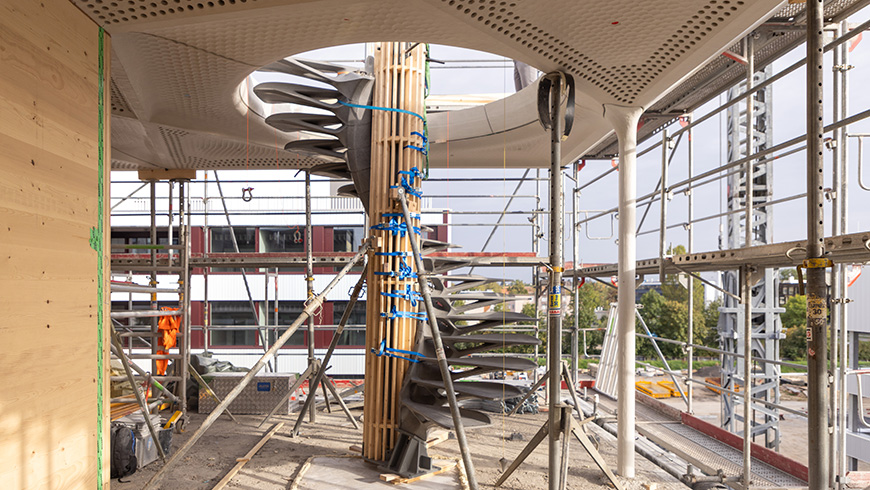
Cooperation on equal terms
«From the very first discussions about STEP2, we defined as the main goal to only build what would have an actual use case in the construction industry whilst being a sustainable solution», says Enrico Marchesi, Innovation Manager NEST and project leader at Empa. «For this reason, we carefully evaluated every single innovation on its relevance and potential within the market», adds BASF co-initiator Andreas Hafner. To achieve this goal, the team heavily relied on a co-creation approach. «We are convinced that real innovation, which can succeed in the market, is only possible if partners all along the value chain are involved. As a longtime member of Switzerland’s research and innovation community, it is imperative for us to be able to identify solutions with economic potential in cooperation with our partners as early as possible – and to contribute to a successful realization of these innovations with our knowledge and expertise», says Olivier Enger, Senior Innovation Manager at BASF.
BASF is the main partner of STEP2 and contributes to the unit’s success with their expertise, their network and the use of sustainable materials. Thus far, the cooperative approach really paid off: partners from a variety of disciplines were able to develop and refine groundbreaking innovations over a three-year planning period. «I’m really excited to be able to implement those solutions into an actual building structure», says Slivan Oesterle, lead architect at ROK.
A ceiling that is saving both resources and CO2
The upper floor of the two-story unit contains a ceiling, which consists of several newly designed ribbed filigree slabs. These were developed by the architectural firm ROK in cooperation with engineers from WaltGalmarini AG and Stahlton Bauteile AG. This ceiling permits a span width of 8 to 14 meters, which makes it ideal for the construction of office spaces and high rises. The slabs were prefabricated at Stahlton Bauteile AG with the help of 3D-printed stencils. These stencils are completely mineral-based and provide the possibility for circular use. After their fabrication, the slabs were transported to NEST and installed on site.
Digital design and 3D-printing lead to a 50 percent reduction in resources and CO2 emissions compared to a regular concrete floor. What’s more, the use of circular concrete allowed zirkulit AG to improve the sustainability of the ceiling even further; by containing less cement than usual and storing CO2. As an additional feature, the ceiling comes with integrated soundproofing. Chemistry partner BASF was able to achieve this through 3D-printed acoustic boxes that are filled with a sound absorbing foam called Cavipor®. The result is a clear and comfortable acoustic atmosphere, despite the hard concrete surface.
Digital construction of a concrete staircase
As with the ceiling, the team was using the full potential of computer-assisted design and 3D printing for the construction of the innovative staircase. Using 3D-printed formwork allowed the creation of more complex shapes than would have been possible with conventional formwork. At the same time, the team was able to use the stencils multiple times, which significantly reduced the amount of materials required for the construction of the staircase. The prefabricated steps were assembled at Empa in Dübendorf, where they were fixed using re-fer’s prestressing technology, and the final staircase was installed as a single component inside the unit. Since the individual steps were threaded onto one another, they can be dismantled and thus reused rather easily. The staircase demonstrates in an impressive manner how customized, resource-saving concrete elements can be realized with digital production methods.

